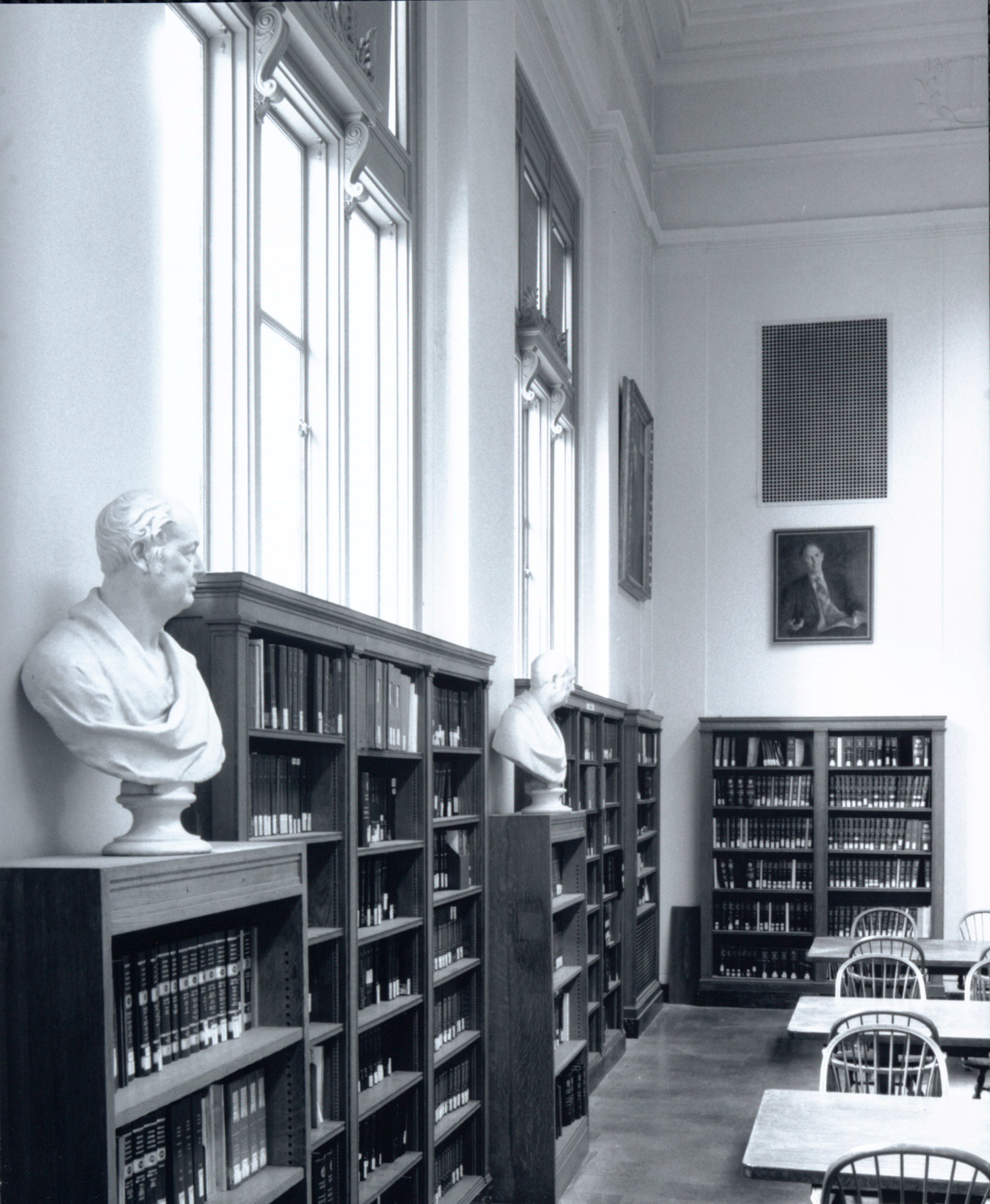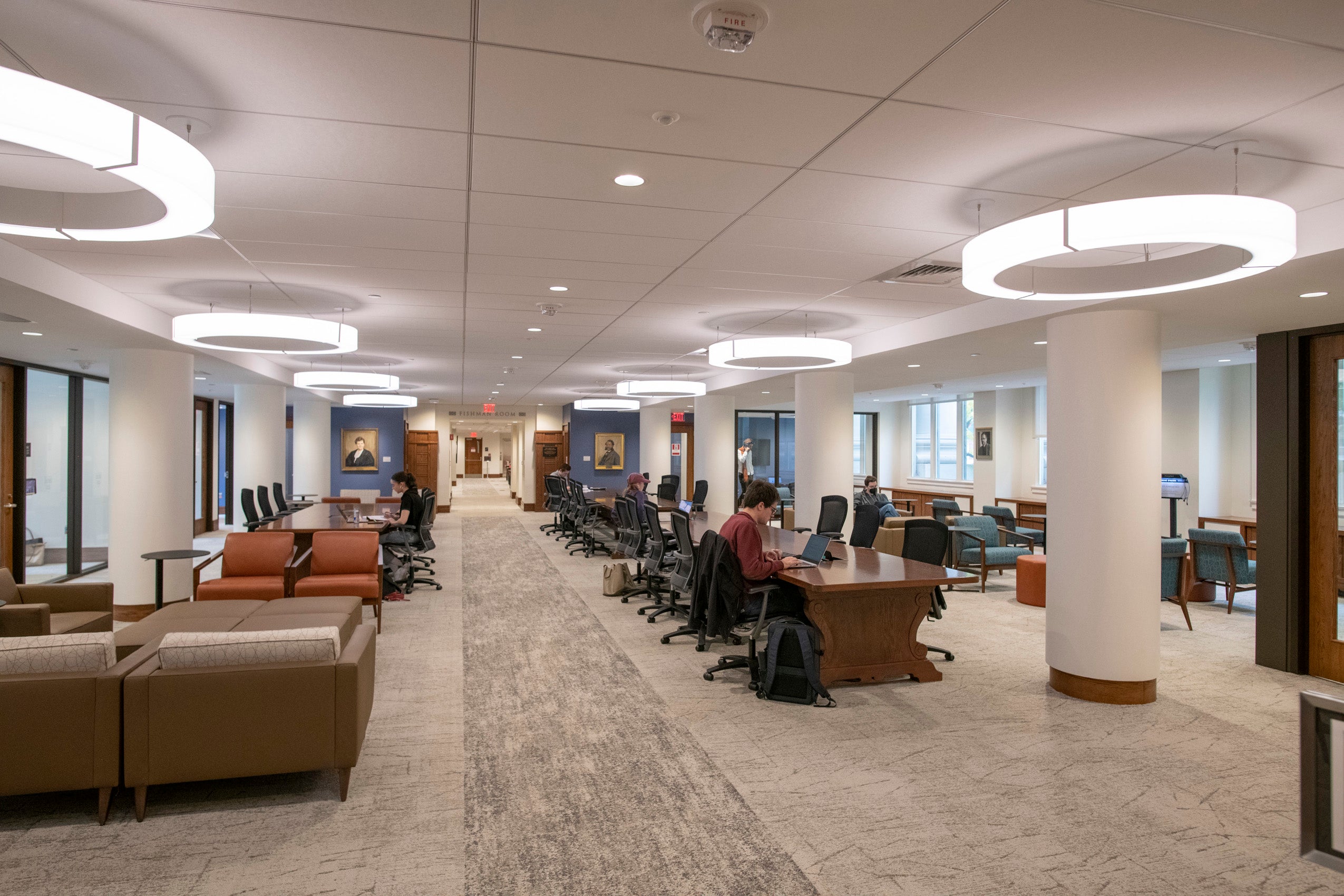In 1905, about two decades after the opening of Austin Hall, Harvard Law School Dean James Barr Ames commissioned a new building to accommodate the law school’s growing population and library.


Located on Holmes Field, the building was designed in a modified neoclassical style with a row of Ionic columns and an exterior façade of buff limestone by the Boston architectural firm Shepley, Rutan, and Coolidge. The building’s columns are reminiscent of the modest columns of Dane Hall in Harvard Yard, which was built for the law school in 1832 and served as its home for 50 years.




Langdell Hall was named after Dean James Barr Ames’ predecessor Christopher Columbus Langdell, the first dean of Harvard Law School and creator of the case method of teaching. Today, Langdell Hall is home to the Harvard Law Library, the most extensive academic law library in the world.
The south wing of Langdell Hall opened for use in 1907. It featured the Reading Room on the top floor that spanned the length of the building and a seven-storied stack room to accommodate the library’s growing collection. By 1910 the collection had grown to almost 121,000 books and 13,390 pamphlets.
The Reading Room has always provided places for study and research — from the cubicles in the stacks to long tables, study carrels, and more recently standup desks. Until the late 1990s, a 24-foot square circulation desk was a centerpiece of the room. A book lift also connected the circulation desk with the book stacks in the basement so that students could secure the desired volume at a moment’s notice. Today the circulation desk is conveniently located near the main entrance of Langdell Hall.





Today the Library’s collections feature over 170 languages and contain over 2 million items (physical and digital), including more than 100,000 rare books, and the primary law from 240 jurisdictions across the globe.






The north and west wings of Langdell were added in 1928 and 1929, more than doubling the building’s space. The additions included new lecture halls, seminar rooms, administrative offices, library stacks, and a courtroom. The courtroom was modeled after the style of the Old English Courts at Westminster with seats for counsel inside the bar on the sides and at right angles to the judges’ bench as well as before the bench. The room’s outstanding acoustics enabled counsel standing with their back to the audience to be heard in any part of the large space.






The Treasure Room, a display room built in 1948 for rare books, manuscripts, and memorabilia documenting the history of the law, is located at the north end of the Reading Room. Renamed the Caspersen Room in 1997 for Finn M.W. Caspersen ’66, the room hosts rotating special exhibits and displays items from the library’s Historical & Special Collections documenting the history of the law and Harvard Law School.
Among the items that can be found in the room are: a portrait of the first class of women to graduate from Harvard Law School by Melvin Robbins; Justice Oliver Wendell Holmes’ lunch box; and furniture owned by Harvard Law School alumni, such as Felix Frankfurter Class of 1906, who served on the U.S. Supreme Court.
At the room’s entrance is a memorial to the students who lost their lives in World War I and World War II.


The Elihu Root Room, located at the south end of the Reading Room in a space that had been designated a student lounge area when Langdell first opened, was renamed and redecorated in 1939 in honor of Elihu Root (1845-1937), a corporate lawyer and American statesman who was awarded the Nobel Peace Prize in 1912 for brokering more than 20 international peace treaties. The Root Room was established as a place for students to catch up on rest and the news, or as a place to read books about lawyers and the law. Today the room is frequented by researchers from around the world, who come to access Harvard Law School’s vast collection of historical legal materials.


In October 2019, the Harvard Law Library opened new group study areas and seminar rooms on the north side of the main floor of Langdell to be used for library events, training sessions, and classes.


Then & Now: Langdell was compiled by Linda Grant, Harvard Law School Communications Office. Special thanks to Mik Hamilton, digital archive assistant, Harvard Law School Communications Office, and Lesley Schoenfeld, public services & visual collections administrator, Historical & Special Collections for research and editorial assistance.
Want to stay up to date with Harvard Law Today? Sign up for our weekly newsletter.
